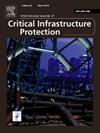利用熵权和物元可拓理论评价区域应急响应能力
IF 5.3
3区 工程技术
Q1 COMPUTER SCIENCE, INFORMATION SYSTEMS
International Journal of Critical Infrastructure Protection
Pub Date : 2025-04-18
DOI:10.1016/j.ijcip.2025.100763
引用次数: 0
摘要
为准确评价区域应急响应能力,本文结合中国国家法律、法规、标准和区域发展数据,建立了以可测量和可量化指标为基础的指标体系。该系统包括目标、指引、子准则和指标水平。目标层代表评价重点,即区域应急能力。指南和子标准层分别包括4个指南和12个子标准。指标层包括28个可量化的指标,如应急计划的编制率、应急演习的频率、应急小组、一般公共预算的财政拨款数量以及社会保障和就业支出的百分比。采用熵权法确定指标权重,采用物质元toptable理论定量评价区域应急响应能力。随后,利用该模型对中国大陆31个省级行政区的应急响应能力进行了评估,验证了模型的有效性。本文章由计算机程序翻译,如有差异,请以英文原文为准。
Evaluating regional emergency response capabilities using entropy weight and matter-element extension theory
To accurately evaluate regional emergency response capacity, this paper establishes an indicator system based on measurable and quantifiable indicators, aligning with China's national laws, regulations, standards, and regional development data. The system comprises targets, guidelines, sub-criteria, and indicator levels. The target layer represents the evaluation focus, i.e., regional emergency response capacity. The guideline and sub-criteria layers include four guidelines and 12 sub-criteria, respectively. The indicator layer includes 28 quantifiable indicators, such as the rate of preparation of emergency plans, the frequency of emergency drills, the emergency response team, the number of financial allocations from the general public budget, and the percentage of social security and employment expenditures. The entropy weighting method is employed to determine index weights, while the material element topable theory quantitatively evaluates regional emergency response capacity. Subsequently, the model is utilized to assess the emergency response capacity of 31 provincial administrative regions in mainland China, confirming its validity.
求助全文
通过发布文献求助,成功后即可免费获取论文全文。
去求助
来源期刊

International Journal of Critical Infrastructure Protection
COMPUTER SCIENCE, INFORMATION SYSTEMS-ENGINEERING, MULTIDISCIPLINARY
CiteScore
8.90
自引率
5.60%
发文量
46
审稿时长
>12 weeks
期刊介绍:
The International Journal of Critical Infrastructure Protection (IJCIP) was launched in 2008, with the primary aim of publishing scholarly papers of the highest quality in all areas of critical infrastructure protection. Of particular interest are articles that weave science, technology, law and policy to craft sophisticated yet practical solutions for securing assets in the various critical infrastructure sectors. These critical infrastructure sectors include: information technology, telecommunications, energy, banking and finance, transportation systems, chemicals, critical manufacturing, agriculture and food, defense industrial base, public health and health care, national monuments and icons, drinking water and water treatment systems, commercial facilities, dams, emergency services, nuclear reactors, materials and waste, postal and shipping, and government facilities. Protecting and ensuring the continuity of operation of critical infrastructure assets are vital to national security, public health and safety, economic vitality, and societal wellbeing.
The scope of the journal includes, but is not limited to:
1. Analysis of security challenges that are unique or common to the various infrastructure sectors.
2. Identification of core security principles and techniques that can be applied to critical infrastructure protection.
3. Elucidation of the dependencies and interdependencies existing between infrastructure sectors and techniques for mitigating the devastating effects of cascading failures.
4. Creation of sophisticated, yet practical, solutions, for critical infrastructure protection that involve mathematical, scientific and engineering techniques, economic and social science methods, and/or legal and public policy constructs.
 求助内容:
求助内容: 应助结果提醒方式:
应助结果提醒方式:


